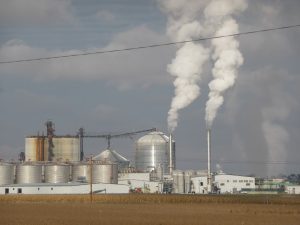
The EPA also finalized the volume requirement for biomass-based diesel for 2018.
The final volumes represent continued growth over historic levels. The final standards meet or exceed the volume targets specified by Congress for total renewable fuel, biomass-based diesel, and advanced biofuel.
U.S. Senator Joni Ernst (R-IA) approved of the action.

“Iowa is a leader in ethanol and biodiesel production and retail, and maintaining a strong RFS aligned with congressional intent is critically important to our state and our country. As we move into a new Congress, I remain committed to promoting innovation in this field while protecting our domestic energy security.
Earlier this year, the Ernst and others called for the EPA to follow Congressional intent when the proposed rule was initially released earlier this year. In addition, Ernst joined a bipartisan group of 39 senators on June 26, 2016, in sending a letter to the EPA encouraging the agency to set the RVO at the level directed by Congress.
Iowa Governor Terry Branstad also weighed in on the decision.

Total renewable fuel volumes grow by 1.2 billion gallons from 2016 to 2017, a 6 percent increase.
Advanced renewable fuel – which requires 50 percent lifecycle carbon emissions reductions – grow by roughly 700 million gallons between 2016 and 2017.
Non-advanced or “conventional” renewable fuel increases in 2017 meet the 15 billion gallon congressional target for conventional fuels.
The standard for biomass-based biodiesel – which must achieve at least 50 percent lifecycle greenhouse gas emission reductions compared to petroleum-based diesel – grows by 100 million gallons. The required volume of biomass-based diesel for 2017 is twice as high as the minimum congressional target.
Cellulosic biofuel – which must achieve at least 60 percent lifecycle greenhouse gas emissions reductions – grows by 35 percent over the 2016 standard.
The advanced biofuel standard – which is comprised of biomass-based diesel, cellulosic biofuel, and other biofuel that achieves at least 50 percent lifecycle greenhouse gas emissions reductions – increases by 19 percent over the 2016 standard.








